
HAPPY EASTER 2024!


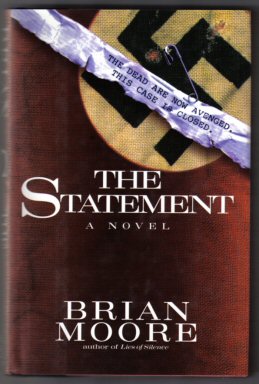
Brian Moore (aka, Bernard Mara and Michael Bryan) is best known for writing the screen play for Alfred Hitchcock’s Torn Curtain. Several of Moore’s novels were adapted for the movies including Intent to Kill, The Luck of Ginger Coffey, Catholics, Black Robe, Cold Heaven, and The Statement.
The Statement is Brian Moore’s 18th novel. The novel begins in southern France where Pierre Brossard is hiding out. Brossard, under the Vichy government during World War II, massacred fourteen Jews in the town of Dombey. Once the Allies retook France, Brossard went underground. For over 50 years, Brossard has been hiding from justice. Elements of the Government and the Catholic Church protect Brossard by moving him around France and allowing him to stay at monasteries and churches.
However, all that changes when Brossard learns he’s being hunted by a vigilante organization of Holocaust avengers. As Brossard tries to find a safe place to hide, he learns his allies are aging and lack the power to protect him. New forces in the Government and Church find no reason to shield a mass murderer from justice.
Moore captures the dangerous life of a man on the run for over 50 years. The chase is on and Brossard’s desperation and fear fuel this thriller. GRADE: B
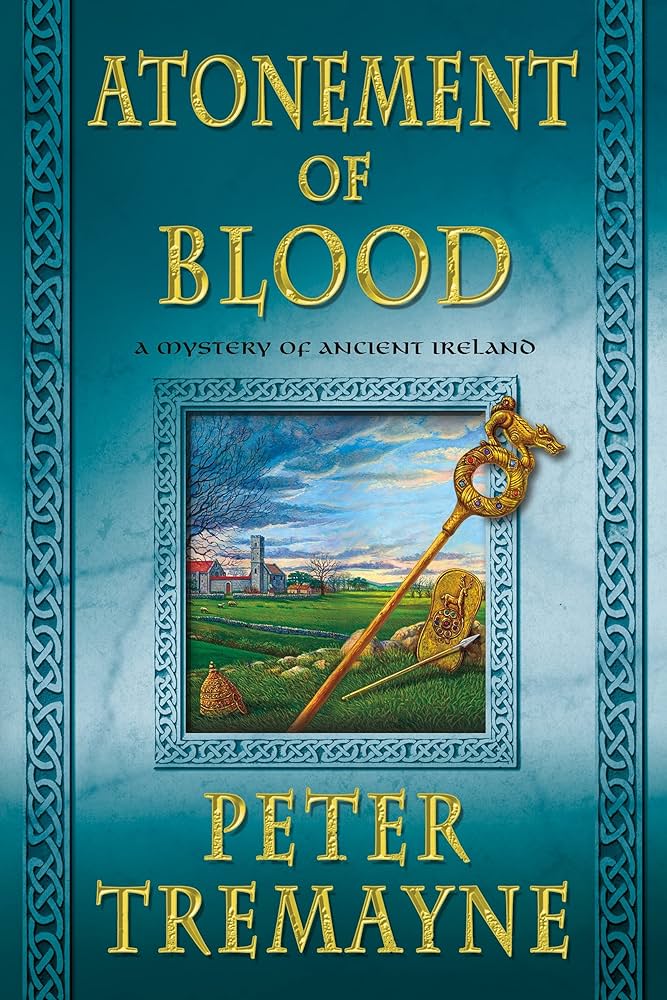
Peter Berresford Ellis, a scholar of the ancient Celts and the Irish, writes as “Peter Tremayne” and specializes in complicated mystery novels. “Tremayne” is best known for his Fidelma of Cashel series featuring a 17th Century Irish sleuth who begins as a nun but after about 20 books decides to leave the religious life and pursue murderers as a powerful attorney whose brother just happens to be a King.
Atonement of Blood is the 24th book in the series and opens with an attempted assassination of the King, Fidelma’s brother, and Fidelma vows to investigate the crime while her brother is near death.
As in the dozen or so Fidelma mysteries I’ve read, the plot is tangled as Fidelma tries to discover the identity of the assassin. The search leads Fidelma into the politics of kingdoms–some unfriendly–that surround Cashel. Four years after Cashel won a local war, seeds of conspiracy and treachery lead Fidelma to probe into the deciding battle that resolved the conflict but left groups who planned vengeance. Fidelma interrogates both nobles and warriors to get to the bottom of what really happened.
For 30 years I’ve been enjoying Fidelma’s exploits as she discovers the truth and identifies murderers. Along the way, readers learn a lot about Irish history and the ways of Life in the 17th Century. Do you enjoy historical mysteries? GRADE: B+
Sister Fidelma series:
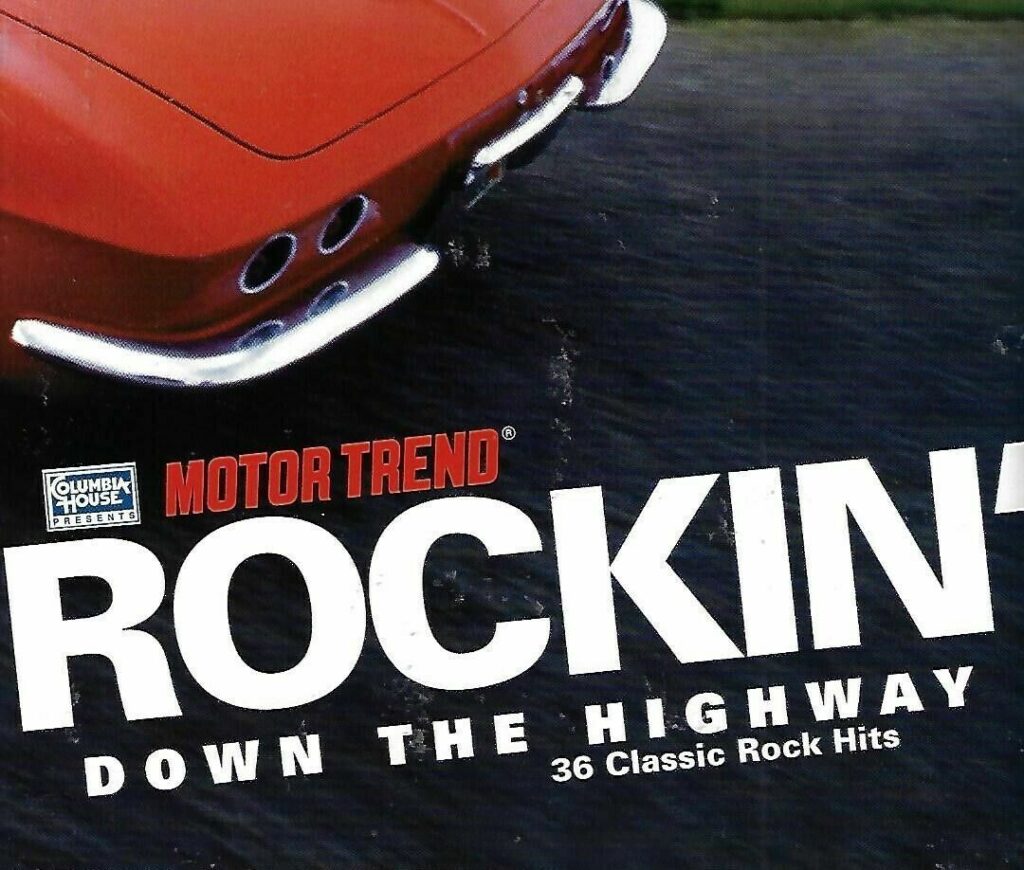
Once again I can quibble with the “36 Classic Rock Hits” subtitle of this 3-CD collection. Maybe “Bang a Gong” by T. Rex might qualify as a “Classic Rock Hit” but I question whether “Long Train Running” by The Doobie Brothers fits the bill.
Of the three CDs in this set, I prefer Disc Three which includes Joe Cocker’s “The Letter,” “Saturday Night’s Alright For Fighting” by Elton John, and “Ramblin’ Man” by the Allman Brothers.
You would think that a compilation set with a Motor Trend logo and titled Rockin’ Down the Highway might include “Life is a Highway” by Tom Cochrane…but you would be wrong.
How many of these songs do you recognize? Any favorites here? GRADE: B
TRACK LIST:
Disc One:
“Hot Blooded” — Foreigner
“Bang a Gong (Get It On) — T. rex
“Smoke on the Water” — Deep Purple
“School’s Out” –Alice Cooper
“25 Or 6 to 4” — Chicago
“Truckin'” –Grateful Dead
“Stay With Me” — Faces
“Karn Evil 9/1ST Impression, Part 2” –Emerson, Lake and Palmer
“Roundabout” — Yes
“Long Train Running” — The Doobie Brothers
“Ride Captain Ride”– Blues Image
“Can’t Get Enough” — Bad Company
DISC TWO:
“I Want to be Sedated” — The Ramones
“Whip It” — Devo
“Love Shack” — The B-52s
“Back on the Chain Gang” — The Pretenders
“La Bamba” — Los Lobos
“What You Need” — Inxs
Medley: “Just a Gigolo”/”I Ain’t Got Nobody” — David Lee Roth
“My Best Friend’s Girl” –The Cars
“Keep Your Hands to Yourself” — Georgia Satellites
“That’ll Be the Day” –Linda Ronstadt
“Ride Like the Wind” –Christopher Cross
“Soul Man” — The Blues Brothers
DISC THREE:
“Radar Love” –Golden Earring
“Ramblin’ Man” –Allman Brothers
“All Right Now” — Free
“Saturday Night’s Alright For Fighting” — Elton John
“Rocky Mountain Way” — Joe Walsh
“I’m Just a Singer in a Rock and Roll Band” — The Moody Blues
“Taking Care of Business” — Bachman Turner Overdrive”
“In a Big Country” — Big Country
“Bad Case of Loving You (Doctor, Doctor)” — Robert Palmer
“Wild Thing” — The Troggs
“The Letter” –Joe Cocker
“Free Bird” — Lynyrd Skynyrd
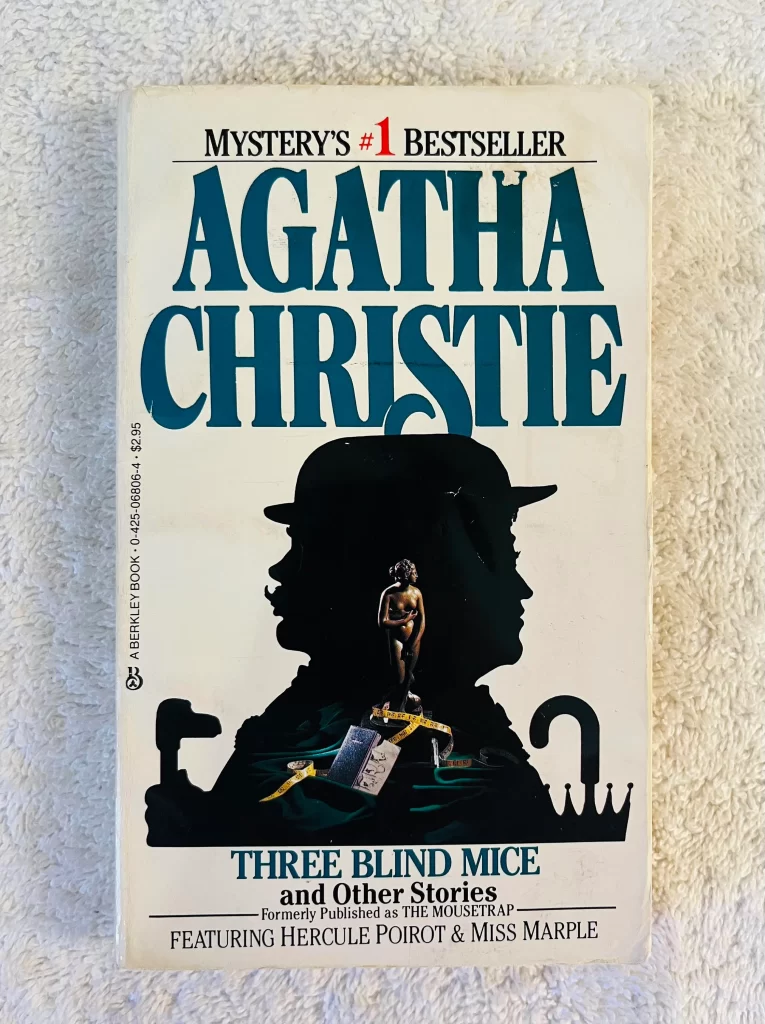
Three Blind Mice and Other Stories (aka, The Mousetrap) includes some Miss Marple stories, some Hercule Poirot stores, and a Harley Quin story.
“Three Blind Mice” is the basis for the famous play, “The Mousetrap,” which opened in London in 1952 and became the longest running play in the English language.
But my favorite stories in Three Blind Mice and Other Stories are “Tape-measure Murder” and “The Third-Floor Flat” and “The Adventure of Johnnie Waverly.” In “Tape-measure Murder” Miss Marple solves the murder with a clever twist. Poirot investigates the murder of a woman in an apartment building and solves a tricky time-line problem to snare the killer. A wealth couple see Poirot after their young son is kidnapped. They receive letters before the kidnapping asking for 25,000 pounds. The couple refused to pay. The kidnapper sent another note giving the day and the time of the kidnapping. The couple contacted the police who staked out their estate at the appointed time. Nonetheless, the boy was kidnapped. Poirot uses his little gray cells to resolve the crime.
If you’re looking for some short stories with engaging crimes and puzzles, Three Blind Mice and Other Stories will answer your needs. GRADE: B+
TABLE OF CONTENTS:

Diane wanted to see Nickel Creek so I bought the tickets and we drove over to the State University of New York at Buffalo’s Center for the Arts. Sadly, the venue was only half full for the performance.
Nickel Creek consists of mandolinist Chris Thile, violinist Sara Watkins, and guitarist Sean Watkins with bassist Jeff Picker. Over the years, the group revitalized bluegrass and folk in the early 2000s and popularized a new era of “Americana Music.”
After a nine year absence, the Platinum-selling, Grammy Award-winning group returned in 2023 with a highly-anticipated album, Celebrants, with 18 songs written collectively during the Pandemic while in Santa Barbara.
After Monica Martin’s short set opening the concert, Nickel Creek lit up the stage with some furious playing. I’ve always considered Sara Watkins a talented singer and fiddle player. Chris Thile knows how to tickle the strings of his mandolin, while guitarist Sean Watkins (Sara’s brother) and bassist Jeff Picker provide melodic accompaniment. All in all, an enjoyable musical experience. Are you a fan of blue-grass music? GRADE: B
SETLIST:
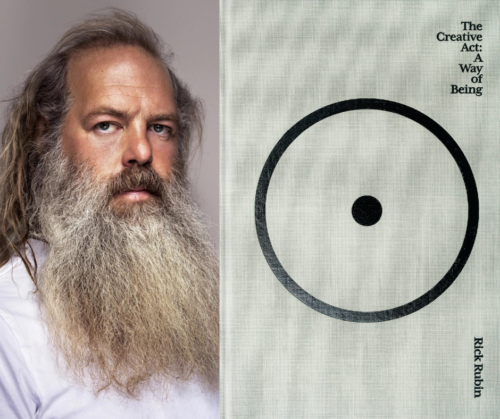
Rick Rubin is a nine-time GRAMMY-winning producer, named one of the 100 most influential people in the world by Time and the most successful producer in any genre by Rolling Stone. He has collaborated with artists from Tom Petty to Adele, Johnny Cash to the Red Hot Chili Peppers, Beastie Boys to Slayer, Kanye West to the Strokes, and System of a Down to Jay-Z.
Rubin approaches creativity to show what works…and what doesn’t. Rubin’s lessons apply to every aspect of creativity— whether music, writing, painting, or, as Rubin says, even more pragmatic situations, such as starting a business, or solving personal problems. The Creative Act is as much a guide to life as it is a guide to art. In a series of short, pithy chapters, Rubin focuses on all the elements of the creative process and how they should be used and improved.
I was impressed by Rubin’s warnings about common mistakes in the creative process:
If you want to understand and enhance your creativity, check out Rick Rubin’s THE CREATIVE ACT: A WAY OF BEING. Highly recommended! Where does your creativity come from? GRADE: A
TABLE OF CONTENTS:
Everyone is a creator — 1
Tuning in — 5
The source of creativity — 13
Awareness — 19
The vessel and the filter — 25
The unseen — 31
Look for clues — 37
Practice — 43
Submerge (the great works) — 49
Nature as teacher — 51
Nothing is static — 55
Look inward — 59
Memories and the subconscious — 63
It’s always there — 67
Setting — 69
Self-doubt — 73
Make it up — 77
Distraction — 85
Collaboration — 89
Intention — 93
Rules — 97
The opposite is true — 107
Listening — 109
Patience — 113
Beginner’s mind — 117
Inspiration — 127
Habits — 133
Seeds — 143
Experimentation — 149
Try everything — 157
Crafting — 163
Momentum — 169
Point of view — 177
Breaking the sameness — 183
Completion — 191
The abundant mindset — 201
The experimenter and the finisher — 205
Temporary rules — 207
Greatness — 215
Success — 219
Connected detachment (possibility) — 225
The ecstatic — 229
Point of reference — 235
Non-competition — 237
Essence — 241
Apocrypha — 247
Tuning out (undermining voices) — 253
Self-awareness — 257
Right before our eyes — 263
A whisper out of time — 269
Expect a surprise — 273
Great expectations — 277
Openness — 283
Surrounding the lightning bolt — 289
24/7 (staying in it) — 295
Spontaneity (special moments) — 299
How to choose — 305
Shades and degrees — 309
Implications (purpose) — 313
Freedom — 317
The possessed — 323
What works for you (believing) — 325
Adaptation — 327
Translation — 331
Clean slate — 335
Context — 339
The energy (in the work) — 343
Ending to start anew (regeneration) — 349
Play — 353
The art habit (sangha) — 359
The prism of self — 363
Let it be — 369
Cooperation — 371
The sincerity dilemma — 379
The gatekeeper — 385
Why make art? — 391
Harmony — 397
What we tell ourselves — 403

Just a few days ago, our temperatures were in the 70s. Then, this crazy weather surprised us by dropping five inches of snow on us. Plus Arctic temperatures that felt like ZERO! It was time to fire up Big Orange and snowblow the driveway and all the neighborhood sidewalks.
How’s the weather in your neighborhood?

Tim Harford shows how statistics and be used–and misused. He uses a quote to introduce a factor that skews statistics. “As Donald Trump’s former right-hand man Steve Bannon infamously told writer Michael Lewis: ‘The Democrats don’t matter. The real opposition is the media. And the way to deal with them is to flood the zone with shit.'” (p. 13). Making up “Fake News” and inventing statistics can overwhelm rational analysis.
Statistical analysis is only as good as the data being analyzed. In the 2016 Presidential Election, voters were unsettled by events–like the Justice Department probe into Hillary Clinton’s emails–and opinion polls didn’t reflect the actual state of the race. “Both problems hit U.S. pollsters in the notorious 2016 election, when the polls seemed to put Hillary Clinton ahead of Donald Trump in the swing states that would decide the contest. There was a late swing toward Trump, and also the same kind of non-response bias that had doomed the 2015 UK polls: it turned out to have been easier for pollsters to find Clinton supporters than Trump supporters.” (p. 147)
When used correctly, statistics can be a powerful tool. But today with all kinds of misinformation and hacking and data manipulation by Bad Actors, it is harder than ever to achieve accurate results. GRADE: B+
Introduction – How To Lie With Statistics 1
Rule 1 Search Your Feelings 19
Rule 2 Ponder Your Personal Experience 47
Rule 3 Avoid Premature Enumeration 65
Rule 4 Step Back And Enjoy The View 87
Rule 5 Get The Backstory 105
Rule 6 Ask Who Is Missing 135
Rule 7 Demand Transparency When The Computer Says No 153
Rule 8 Don’t Take Statistical Bedrock For Granted 185
Rule 9 Remember That Misinformation Can Be Beautiful, Too 213
Rule 10 Keep An Open Mind 239
The Golden Rule Be Curious 265
Acknowledgments 281
Notes 285
Credits 307
Index 309

What was the state of Science Fiction in 1984? The answers can be found in THE SCIENCE FICTION SOURCE BOOK edited by David Wingrove. Wingrove provides several sections to give a wide range of information to the reader (just check out the Table of Contents below).
The book begins with an introduction by Brian Aldiss on the history of SF, following from his earlier Billion Year Spree (1973) and preparing for his revision of it with Wingrove as Trillion Year Spree (1986).
Then there are 40 pages on SF sub-genres by Brian Stableford (my favorite part of the book!):
I enjoyed the 10 superb vignettes by leading writers (Bradbury, Cowper, Le Guin, Silverberg, Sladek, Tuttle, Wolfe, Zelazny) revealing their own writing habits. While the pieces by Wingrove and Malcolm Edwards on sf publishing and criticism are informative, given the 1984 publishing date, these analysis’s are good for historical value only.
Finally, there’s the superbly grumpy and negative afterword by Kingsley Amis on why none of it is any good, at least none that has been published since his own New Maps of Hell in 1960.
THE SCIENCE FICTION SOURCE BOOK is a consumer’s guide to 880 novelists and more than 2000 works; a brief history of science fiction; 15 sub-genres of Science Fiction, analysis of major works; verbal pictures of science fiction writers at work while 12 writers explain their methods; a status report on science fiction publishing and checklist of science fiction magazines; science fiction criticism and checklist of critical works. Highly recommended! GRADE: A
TABLE OF CONTENTS: